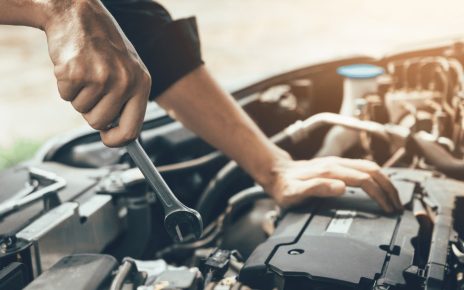Towing is one of the most demanding tasks you can ask of your vehicle—especially when you’re hauling heavy trailers, boats, campers, or equipment. And while your engine gets a lot of the credit, your transmission is the real workhorse, responsible for managing torque and delivering smooth, controlled power to the wheels.
Unfortunately, too many drivers unknowingly damage their transmissions while towing—leading to expensive repairs, reduced performance, and sometimes total failure. Whether you tow occasionally or haul regularly, protecting your transmission should be a top priority.
Here are some essential tips to help you tow confidently—without killing your transmission.
1. Know Your Tow Rating (and Respect It)
Your vehicle’s tow rating isn’t a suggestion—it’s a limit based on the capacity of the frame, engine, suspension, brakes, and, crucially, the transmission. Overloading your vehicle puts immense strain on the transmission, which can lead to overheating, slipping, and premature wear.
Before hitching up a trailer or load, check your owner’s manual or vehicle spec sheet to determine the Gross Vehicle Weight Rating (GVWR) and Gross Combined Weight Rating (GCWR). Remember to factor in cargo, passengers, and fluids—not just the trailer itself.
Staying under these limits gives your transmission a fighting chance at a long life.
2. Use the Right Gear (and Tow Mode, If Available)
When towing, your vehicle’s default driving mode may not cut it. Many trucks and SUVs offer a “Tow/Haul” mode that alters shift points and holds gears longer to provide more torque and reduce strain on the transmission.
If you’re driving a manual transmission, downshift early and avoid lugging the engine in high gear. For automatics, avoid using overdrive when towing heavy loads unless your vehicle specifically allows it, as overdrive gears typically offer less torque and can overheat your transmission.
Using the correct gear keeps the transmission operating within its safe range—and reduces internal wear.
3. Keep It Cool: Invest in a Transmission Cooler
Heat is the number one enemy of your transmission. Towing increases the workload, which dramatically raises transmission fluid temperatures. Prolonged overheating can break down fluid, warp internal components, and cause total failure.
If you tow frequently or through hilly terrain, a transmission cooler is one of the best upgrades you can make. These devices act like mini radiators that help dissipate excess heat from the transmission fluid, maintaining optimal operating temperatures even under load.
Especially for those running a 4×4 transmission, where heat already builds during off-road driving, a cooler can add years to your drivetrain’s life.
4. Check (and Change) Transmission Fluid Regularly
Transmission fluid lubricates, cools, and protects the internal components of your gearbox. But under heavy towing conditions, that fluid breaks down faster—losing its effectiveness and becoming a liability.
Check your fluid level and condition frequently when towing. Healthy fluid should be a clear red or pink color and smell slightly sweet. If it’s dark, cloudy, or smells burnt, it’s time for a change.
Follow your vehicle’s recommended service intervals, but consider changing your fluid more frequently if you tow often—especially in hot climates or rugged terrain. Clean fluid is essential to transmission performance and longevity.
5. Brake Smart—Don’t Rely on Downshifting Alone
While engine braking is a useful tool when descending grades, relying too much on downshifting—especially with an automatic transmission—can overwork your gearbox.
When going downhill, use trailer brakes (if equipped) in conjunction with lower gears. Don’t downshift rapidly at high RPMs or let the engine scream just to slow your descent. Doing so can increase heat and stress inside the transmission, particularly if you’re carrying a full load.
Whenever possible, coast gradually and let your brakes share the burden—just be mindful to avoid overheating those too.
6. Don’t Skip Warm-Up or Cool-Down Time
Before towing, let your vehicle warm up fully. Cold transmission fluid is thicker and doesn’t flow well—putting extra stress on components until it reaches optimal temperature. Give your engine and transmission a few minutes of idle time, especially on cold mornings.
Similarly, after a long towing session—especially in warm weather or hilly terrain—don’t shut the engine off immediately. Allowing your vehicle to idle for a minute or two lets the transmission fluid circulate and dissipate heat, reducing the risk of heat soak.
This simple practice helps prevent long-term wear.
7. Maintain Proper Tire Pressure and Trailer Balance
An overloaded or unbalanced trailer creates drag and uneven forces that make your transmission work harder. Make sure your trailer is properly loaded—heavier items over the axle and evenly distributed side to side. Tongue weight should be around 10–15% of the trailer’s total weight.
Underinflated tires increase rolling resistance, further taxing your transmission. Check all tires—on both your vehicle and trailer—before every tow.
Proper load distribution and tire pressure help your transmission operate within a safer and more efficient range.
Towing doesn’t have to spell doom for your transmission. With the right habits, regular maintenance, and a little added care, you can protect your vehicle’s drivetrain and get the job done without unnecessary wear or failure.
If you’re running a 4×4 transmission, pay special attention to heat management, gear selection, and fluid condition, especially on steep inclines or when off-roading with a trailer. Your transmission is designed to work hard—but it’s your job to keep it working smart.





